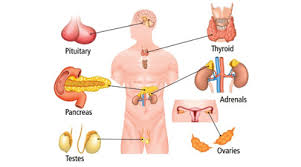Welcome to the Endocrine System
Review for quiz image below, factors for finding and binding, mechanisms for hormone release (types of stimulation), functions of hormones, classifications of hormones, medical terms and principle glands

Review for quiz image below, factors for finding and binding, mechanisms for hormone release (types of stimulation), functions of hormones, classifications of hormones, medical terms and principle glands
Homework Assessment
review of function of hormones, mechanism for release, 3 factors for finding and binding
Steroid/non-steroid, pituitary galnd
Endocrine Purpose Games
Friday Homework
read pp 316-318
packet p 2 # 7-10
p 6 - anterior and post pituitary only
p9-10
read pp 316-318
packet p 2 # 7-10
p 6 - anterior and post pituitary only
p9-10
Competencies we are covering this week
1. Academic competency: understand human anatomy, physiology, common diseases and disorders and medical math principals
Learning Targets
1. list the organs of the nervous system and describe the generalized functions of the nervous system as a whole
2. Identify the major types of cells in the nervous system and discuss the function of each
3. Identify the structure of a nerve/ neuron
4. compare and contrast the differences between a sensory, motor and interneuron
5. identify the anatomical and functional components of a three neuron reflex arc
6. Describe the propogation of a nerve impulse along a nerve fiber and across a synaptic cleft.
- describe the differences between a graded potiential, and and action potential of a neuron.
7. Identify the major neurotransmitters and describe their general function
8. Identify and describe the anatomical components of the brain and spinal cord, their functions and brain and spinal cord dysfunctions.
9. compare and contrast the coverings of the brain and spinal cord . Describe CSF flow through the brain, and discuss related disorders .
10. Describe the differences between cranial and peripheral nerves, and related disorders
11. Discuss the structure of the ANS , the differences in the divisions and related disorders.
No comments:
Post a Comment